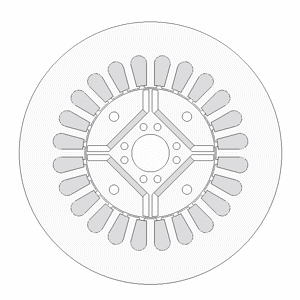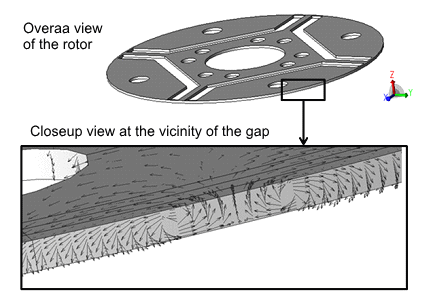Contents
1. Introduction
2. What is the specific difference?
3. Analysis of the cause of the difference
4. Summary
5. References
1. Introduction
As rotating machines increase in speed and geometries become more complicated, prediction of performance by loss calculations become increasingly important. A method, which has also been adopted by JMAG, of taking into account loss inside laminations during post-processing using the results of electromagnetic field finite element analysis has been proposed. This method is a method of obtaining a loss distribution inside a lamination by 1D analysis using the results of a 2D analysis, where the most accurate results from the 2D analysis can be obtained as shown in Ref. (called the “2D + 1D method”). However, when evaluating the loss of a certain IPM motor model, there was a difference between the results from a 3D analysis modeling a laminated steel plate and the results of the loss from the 2D + 1D method.
Investigation of the cause of this revealed that the geometry effects from the laminated steel sheet and the eddy currents and the high frequencies are the reasons for the difference between 3D analysis and 2D+1D method.
In this white paper, based on the results of this analysis, the scenarios where the 2D + 1D method degrades accuracy are made clear and issues to be addressed in the future are presented.
2. What is the specific difference?
Using the IPM motor model shown in Fig. 1, the eddy current loss generated in a laminated steel sheet is evaluated. Fig. 2 shows the loss average value when the rotation speed varies from 900 rpm to 7,200 rpm. It is seen that the difference increases as the rotation speed increases.

IPM motor model (Harumi No. 1)

Eddy current density distribution on gap surface of rotor
You need to sign in as a Regular JMAG Software User (paid user) or JMAG WEB MEMBER (free membership).
By registering as a JMAG WEB MEMBER, you can browse technical materials and other member-only contents for free.
If you are not registered, click the “Create an Account” button.
Create an Account Sign in



